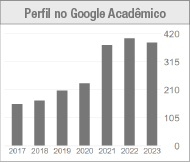Políticas Dosieres Temáticos
- Esta seção é composta por artigos inéditos, de relevância à área temática da revista e do referido dossiê, cujo tema poderá ser proposto por qualquer membro da Equipe Editorial, pesquisadores interessados, devidamente justificado e relacionado as artes cênicas.
- A Editoria dos Dossiês Temáticos deve ser composta por no mínimo quatro (4) proponentes. Todos devem estar cadastrados no site da Urdimento,
- As propostas devem apresentar:
- Resumo do tema;
- Detalhamento em itens do tema;
- Link do curriculo lattes dos componentes;
- Link do ORCID dos proponentes;
- E-mail dos proponentes
- A proposta é analisada pela Editora-chefe e Editores Associados.
- Após aprovação, pelo Corpo Editorial, o Dossiê Temático proposto deve ser encaminhado, nos moldes da Urdimento nos idiomas português, inglês e espanhol, acompanhados de uma imagem para elaboração do flyer de divulgação do trabalho.
- A Editora-chefe pode estimular que as/os organizadoras(es) dos dossiês temáticos pertençam a diferentes instituições de ensino e pesquisa situadas em diferentes estados do país.
- Os artigos enviados aos Dossiês Temáticos serão avaliados, exclusivamente, pelos membros dos Comitês Editoriais específicos de cada dossiê. Submetidos ao sistema de avaliação duplo-cego.
- A Editoria do Dossiê Temático pode submeter artigos para o Dossiê proponente desde que esta pessoa não seja a avaliadora de seu trabalho. E seu artigo computa no montante total de textos que pode compor um Dossiê Temático.
Os Dossiês Temáticos podem ser compostos:
- No máximo por 10 (dez) artigos inéditos (Seção Dossiê);
- Um (1) debate inédito e vinculado a temática do dossiê (Seção Debates);
- Um (1) texto teatral inédito e vinculado a temática do dossiê (Seção Dramaturgias);
- Um (1) artigo-relato (Seção Relatos).
Atividades de Editoria devem ser desenvolvidas em duas etapas:
Primeira Etapa – Avaliações dos artigos no duplo-cego
- Avaliar e dar parecer aos textos enviados ao Dossiê Temático pela Plataforma OJS3.
- Verificar se o/a autor/autora atendeu ao solicitado no caso do pedido de correções.
Segunda Etapa – Definição da composição do Dossiê Temático
- Definir os artigos que irão compor o Dossiê Temático, após suas aprovações finais pelo conjunto editorial do dossiê. Lembrando que mesmo que sejam aceitos mais que o limite estabelecido, os aprovados finais devem se restringir ao total estabelecido acima.
- Estabelecer a sequencia dos textos que irão compor o referido dossiê.
- Redigir o Editorial do Dossiê Temático.
- Os textos finais, aprovados pelo Comitê Editorial, inclusive o Editorial, devem ser remetidos por ......................., para a Editora-chefe da Urdimento.


